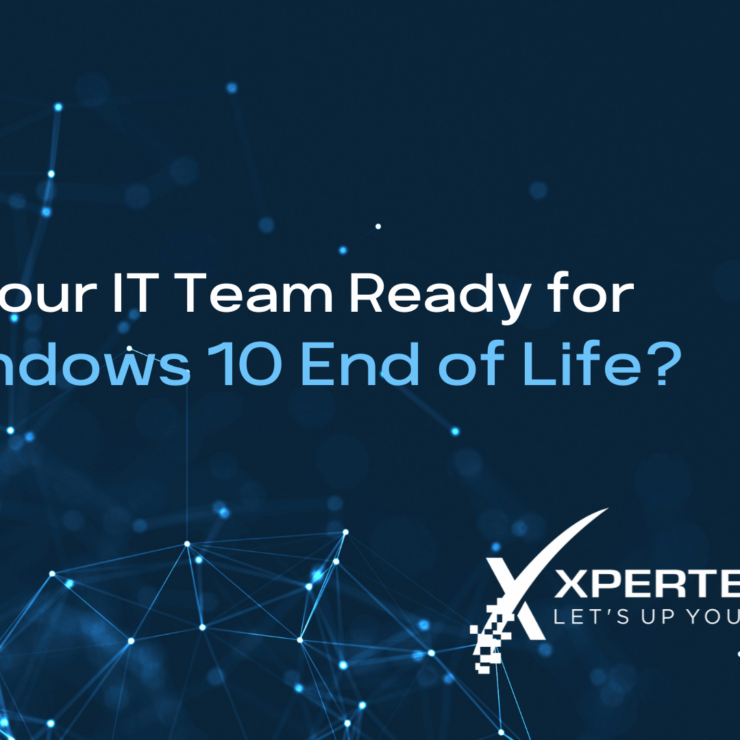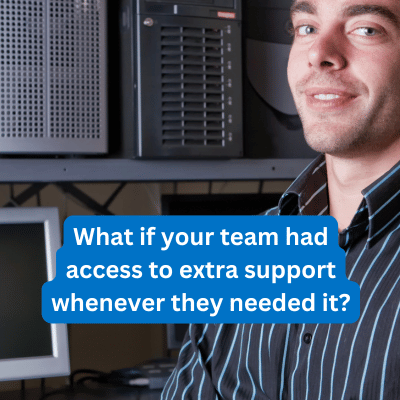Is Your IT Team Ready for Windows 10 EOL?

The countdown to Windows 10 End of Life (EOL) on October 14, 2025, is on. On this date, Microsoft will officially stop supporting Windows 10, leaving businesses worldwide to navigate a critical transition. With millions of devices and systems impacted, this isn’t just another upgrade—it’s a global race to secure resources, avoid disruptions, and protect operations.
The pressure is on for your IT team to deliver during this critical transition. Success will take more than technical know-how; it demands careful planning, strategic decisions, and the ability to execute under tight deadlines. Plus, as organizations rush to upgrade, looming hardware shortages and limited IT support make early action essential.
So, is your IT team ready to lead this mission-critical effort—and can they act fast enough to stay ahead of the global rush?
How to Keep Your IT Team Ahead
To meet the challenges of Windows 10 EOL, your IT team needs to focus on three priorities: securing hardware, managing resources, and minimizing risks.

1. Prioritize Hardware Upgrades
Demand for hardware is already increasing as businesses upgrade to Windows 11. Waiting too long could leave your team scrambling for critical equipment. Acting now means avoiding supply chain delays and having your systems ready when you need them.
2. Strengthen Your Team’s Capacity
Balancing an EOL transition with day-to-day IT responsibilities is a big ask. Assess your team’s workload and identify where support might be needed. If gaps exist, consider reallocating resources or partnering with external experts to ensure the transition gets the attention it deserves.
3. Build a Risk Management Strategy
Delays in upgrading can leave systems vulnerable to cyber-attacks or operational downtime. A proactive risk management plan, complete with data backups and contingency measures, will protect your business and maintain stability throughout the transition.
Related: Prepare for Windows 10 End of Life with a Strategic Hardware Refresh
Lessons from Past EOL Events
Windows 10 EOL may feel like a unique challenge, but businesses have navigated similar transitions before as previous operating systems went out of support. Successful organizations tend to follow three key strategies:
- Start early. Planning ahead secures resources and avoids last-minute pressure.
- Balance workloads. Overburdened IT teams are more likely to encounter delays or errors.
- Look for opportunities. Transitions can be a chance to address inefficiencies and improve operations, not just a technical necessity.
While these lessons are a good starting point, every transition brings new challenges. For many businesses, the right support is what makes the difference between success and struggle.
Where IT Teams Often Need Help
Even the best IT teams can face obstacles during an upgrade of this scale. Challenges tend to fall into three main areas:

1. Competing Priorities
Juggling daily tasks, urgent requests, and strategic initiatives leaves little room for additional projects. Adding a Windows 10 EOL transition can stretch resources to the breaking point.
2. Complex Dependencies
Operating system upgrades often require more than installation. Hardware, software, and workflows need to align, and resolving compatibility issues can take significant time and effort.
3. Employee Adoption
New systems often mean new processes for employees. Without clear communication and training, adoption can stall, making it harder to realize the benefits of the upgrade.
These challenges aren’t about your IT team’s skills—they’re about the scale of the task. Strategic support can lighten the load and keep everything on track.
How Managed IT Services Can Lighten the Load
A Windows 10 EOL transition is more than a technical project. It’s a complex, time-sensitive effort that requires careful coordination and expertise. Managed IT services can provide the additional capacity and guidance your team needs to succeed.
1. Streamlining the Process
From conducting audits to managing procurement, managed IT providers take on the time-consuming tasks that often slow down internal teams. Their experience with similar projects helps them identify and resolve potential issues early.
2. Bringing Specialized Expertise
Upgrades often reveal gaps in knowledge, such as resolving compatibility issues or navigating supply chain challenges. Managed IT providers offer focused expertise to handle these complexities with precision.
3. Freeing Up Internal Resources
Taking on the transition alone can strain your team’s ability to keep up with daily responsibilities. Managed IT providers step in to manage the workload, ensuring day-to-day operations continue uninterrupted.
4. Providing Post-Transition Support
The work doesn’t stop once the upgrade is complete. Managed IT providers offer ongoing monitoring and support to keep systems secure and performing optimally as your business moves forward.
Co-Managed IT: A Solution Beyond Windows 10 EOL

Making your way through Windows 10 EOL is a test of your IT team’s capacity, expertise, and ability to adapt under pressure. But this transition also raises a larger question: What if your IT team had access to extra support, not just now, but whenever they need it?
That’s where co-managed IT services come in. By partnering with a managed IT provider, your team gains the flexibility to handle complex projects like this transition while staying focused on day-to-day operations. It’s not about replacing your IT team—it’s about strengthening them with the resources and expertise to deliver results, no matter the challenge.
Co-managed IT services can help with:
- Scaling resources for major initiatives like cloud migrations and new software installation.
- Providing specialized cybersecurity expertise to effectively manage cyber risks.
- Filling skill gaps without the need for full-time hires.
- Improving IT efficiency by sharing the workload on high-priority tasks.
With a co-managed approach, your IT team isn’t just supported during big transitions—they’re empowered to take on more, innovate faster, and tackle challenges with confidence.
Related: When to Bring in Reinforcements: 5 Signs You Need Co-Managed IT
Is Co-Managed IT the Right Fit for Your Team?
Windows 10 EOL is just one of many challenges your IT team will face. If they’re feeling stretched, overworked, or under-resourced, now is the perfect time to explore how co-managed IT can help.
Whether it’s securing your systems with cybersecurity expertise or scaling resources for the next big project, co-managed IT offers the support your team needs to thrive.
Download our Windows 10 Quick Start Guide and get questions you can use to assess your IT team’s readiness for Windows 10 EOL.
If you’re wondering what co-managed IT might look like for your organization, get in touch to start a conversation.
